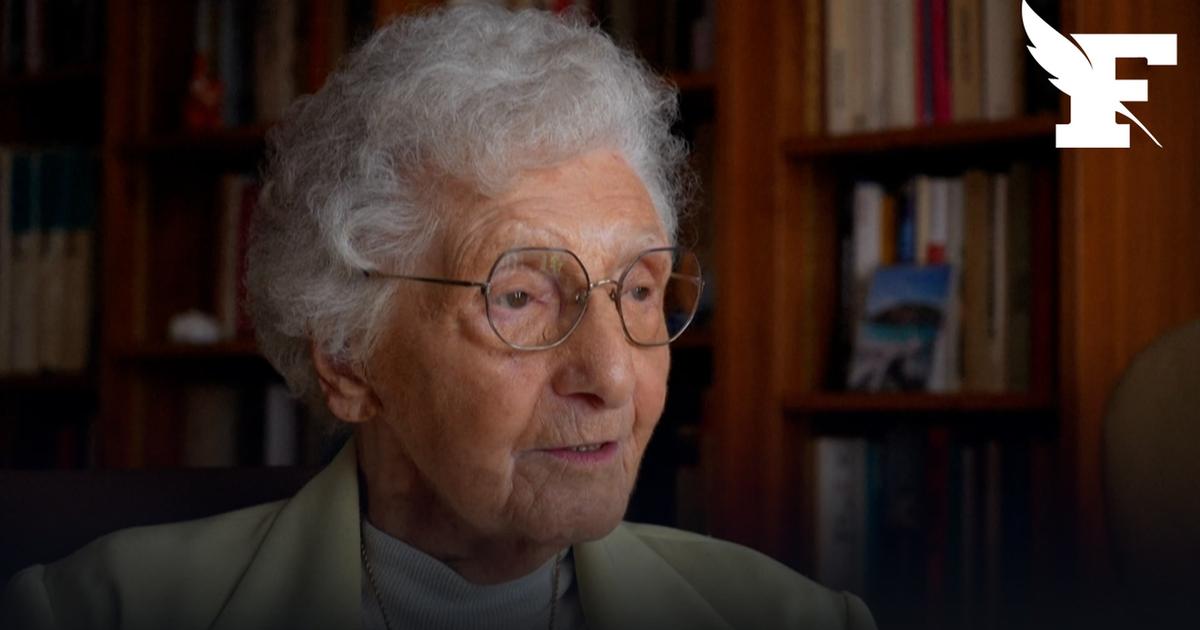A Junkers Ju 52 like the one that crashed in Tarragona with Von Scheele as a passenger.o.Ang.
(Bundesarchiv)
“It's been 20 years of research, this is how far I've come.
I think we will never know some things”, he establishes, pushing the voluminous dossier that he has prepared over two decades on the accident of a German Junkers Ju 52 in 1939 in the Sierra de Llaberia (Tarragona) on the cafeteria table. Antonio Valldeperes .
The gesture of Valldeperes (Barcelona, 78 years old), tired but proud, defeated but not defeated, is reminiscent of Vercingetorix throwing his weapons at César's feet.
In his case, the investigator spilled his cup of coffee, which luckily did not fall on the precious documentation.
In 2001, Valldeperes, passionate about aeronautics and currently vice president of the Catalan section of the Association of Aviators of the Republic (ADAR), climbed for the first time to the place between the municipalities of Colldejou and Tivissa where the plane crashed. Friday, August 4, 1939, around 3 p.m., the Lufthansa Ju 52 with registration D-AUJG, serial number 5942 and named
Hans Wende
.
At the site of the accident, some 850 meters above sea level, he found remains of the plane and its occupants on various visits;
among other things, the keys of a Mercedes car (which from being in a
parking lot
it will cost a fortune to remove) and a silver pocket watch.
The device covered the route from Stuttgart to Madrid, with various stops (the last one had taken off from Barcelona).
Four crew members and three passengers were traveling on the plane, who all died.
Among the passengers was a person of great importance: Colonel Alexander von Scheele, 52, a native of Mainz and a prestigious commander of the Luftwaffe, the German air force, who had been the first commander of the famous Condor Legion in the Spanish Civil War.
What Von Scheele was doing traveling to Madrid on a civil flight less than a month after the start of World War II is one of the mysteries that the accident keeps.
More information
the burned pilot
Under the command of the German soldier (then with the rank of major), the first contingent to support the insurgents arrived in Spain at the end of July 1936: 25 officers, 66 non-commissioned officers, civilian technicians, radio specialists, mechanics and a medical officer. .
Under the orders of Von Scheele, the famous transfer of Moroccan Army troops to the Peninsula was organized at the outbreak of the military coup, the first airlift in history, on board precisely Ju 52 aircraft, the same transport plane with which then he would kill himself, in what could be seen as a curious act of historical justice, the German soldier.
It is seen that it was a spectacle to observe how 45 soldiers from the Moorish troops and the Legion, with all their equipment and reluctant to fly, got into the aircraft designed for 17 passengers;
Image of the Ju 52 "Hans Wende"
The emblematic Ju 52 trimotor, with its characteristic corrugated iron fuselage, was one of the backbone aircraft of the Third Reich and was widely used from 1932 to 1945 in its civil and military versions.
Hitler himself used one during the presidential election campaign that brought him to power and later had two in his personal fleet—and Goering three;
it could also be thought what a pity that those Ju 52s did not fail. The military version, known as
Tante Ju,
Aunt Ju, and "Hitler's mule" (a phrase you should never utter in public, let alone in front of the Gestapo) was crucial in transporting troops and paratroopers during World War II, and Von Scheele already put it to innovative use as bomber in the Cóndor —later it would be used in Gernika and Warsaw— when on August 13, 1936 he allowed Lieutenant Rudolf von Moreau at the controls of one to drop some bombs on the republican battleship
Jaime I.
"The first day I went up to the mountains and found the remains of the plane, my obsession with the accident began," explains Valldeperes, who remembers that the story was forgotten and he, and other fans of prying into the past, unearthed it (one of them , Pablo Ruiz, has even built a model of the accident, and on YouTube you can see a virtual simulation of the flight until it collided with the mountain).
“I was collecting fragments of the episode as well as pieces of the device.
I found the newspaper reports of the time, the official German and Spanish reports, the death certificates… and I have tried to reconstruct what happened”.
The plane, the researcher points out, encountered bad weather on its route and strong downwinds and although the pilot, Captain Frederick Mack, was very experienced,
it crashed at the high point of the sierra known as the channel of the Roc.
Apparently, it first hit a wing, which detached, and then impacted the rest of the aircraft (the bump on the mountain can still be seen).
There are testimonies from residents of nearby towns who saw the Ju 52 pass very low and then heard an explosion and saw a flame.
It is said that a wheel rolled down the mountain.
The key to a Mercedes found by Valldeperes at the scene of the accident.
They all died instantly.
"Reports indicate that the bodies were very fragmented, we have even found some very small bones," says Valldeperes.
“The corpses were taken to Barcelona and a funeral chapel was installed in the German School.
Von Scheele's remains were repatriated and his burial in Germany was attended by Goering himself (with whom the colonel had a certain physical resemblance).
Neighbors from the surrounding area went to the accident site and took everything they could find that could be reused;
the metal of the plane was recovered by the scrap dealers.
We went with detectors and in about twenty visits we have found numerous remains of historical interest, such as a piece of engine with the serial number, a seat belt buckle, a suitcase lock, pieces of Plexiglas,
remains of light bulbs, a piece of the plane's compass, crew buttons...
Also an earring from her only passenger, Rosario Valdivia from Seville, wife of the German merchant Hans Walter Kirchner, who was traveling with her.
We have tried to locate the relatives of the victims to deliver the personal belongings, but we have not found them.
We know that Von Scheele's widow was in Barcelona in the funeral chapel and that she had a cross placed at the scene of the accident, which is still there, very simply, with only the date of the event.
Most likely, the keys to the Mercedes belonged to the colonel."
We have tried to locate the relatives of the victims to deliver the personal belongings, but we have not found them.
We know that Von Scheele's widow was in Barcelona in the funeral chapel and that she had a cross placed at the scene of the accident, which is still there, very simply, with only the date of the event.
Most likely, the keys to the Mercedes belonged to the colonel."
We have tried to locate the relatives of the victims to deliver the personal belongings, but we have not found them.
We know that Von Scheele's widow was in Barcelona in the funeral chapel and that she had a cross placed at the scene of the accident, which is still there, very simply, with only the date of the event.
Most likely, the keys to the Mercedes belonged to the colonel."
Luftwaffe Colonel Alexander von Scheele.
Many legends surround the accident, one is that it was loaded with potatoes destined for the black market and the black market, another that it landed in unexpected places.
But what has been speculated on the most is what Von Scheele was coming to Spain to do.
For Valldeperes, it is clear that he had a secret mission.
Possibly talking to the Spanish military about something related to the impending World War II.
The colonel was traveling unaccompanied and apparently was not in uniform.
As far as is known, no documents that the military could carry were recovered.
“We don't know why he came, we haven't found any evidence anywhere, but I suppose he wouldn't come to Spain on vacation.
He had contacts with the Spanish Army, a language he spoke perfectly, and even friendly relations with many generals.
A passenger boarding the Ju 52 'Hans Wende' in an old documentary image.
The investigator does not believe that the accident was due to an attack, as described very effectively in the imaginative novel
El Graal de Montserrat
by the well-known Catalan historian and specialist in science education Xavier Hernández (Capital Books, 2021).
In the novel, Von Scheele, "hero of the Condor and strongman of the Abwehr in Spain," is appointed by Himmler to help SS experts search for the grail at Montserrat, which he does not without skepticism.
On the appointed day, he goes to the Stuttgart airport and boards the Ju-52 with the blue uniform of the Luftwaffe and a briefcase in which an entire road map of what Hitler hopes to achieve from the Spanish is outlined.
A beautiful Nazi agent, Herta, also travels in the device, who turns out to be a double spy and the colonel hits on her, although we will have to wait for another novel to see an
Emmanuelle -type scene
in a Ju 52. At one point in the flight, the girl, whose mission is to eliminate the colonel, brandishes two Luger pistols and kills everyone;
finally, she parachutes while the Ju 52 loaded with corpses heads against the crests of the Llaberia mountain range.
"The episode is narrated with great grace, but Xavi made it all up, it's pure fiction, of course," says Valldeperes, who is a good friend of the author, with the frustration of someone who cannot offer such a complete story.
Von Scheele, right, in Namibia, next to one of the planes of the German colonial force.
"I wish we could find out more," laments the researcher.
Spurred on by the mystery, whoever signs these lines has been able to find out some details that Valldeperes did not know to modestly add to the case.
The name of the Ju 52 (the Lufthansa used to baptize them),
Hans Wende
, corresponds to a German pilot who fought in the First World War, flew for the Dutch firm NAVO and signed for the German flag carrier in 1926;
I have even found several photos of the aviator.
And also some unpublished images of the device that bore his name and that crashed in Tarragona, taken at the Tempelhof airport in Berlin.
Also, I have found some interesting facts about Von Scheele (and photos) that complement his profile and his story.
The man who killed himself in the Sierra de Llaberia had a very interesting past even before he sent the Cóndor.
Like other commanders of the future Luftwaffe and his chief Hermann Goering fought as a pilot in World War I, but on a very curious front: in Namibia, the then colony of German South-West Africa,
The aviator Hans Wende.
Von Scheele, then a 27-year-old lieutenant, who had earned his pilot's license in 1912, arrived in Africa in 1914 as commander of the new air force of the Schutztruppe, the German imperial colonial army.
Initially they were a shallow force consisting of two aircraft (one Aviatik biplane and one Roland) and three pilots, one of them Austro-Hungarian.
He flew numerous reconnaissance and bombing missions over South African enemy lines with the Aviatik, although he did not engage in air combat as Entente aircraft were soon in the area.
In 1915 he was injured in an accident (to which we may think he was prone) and did not recover to fly again before the end of the campaign.
He was later interned as a prisoner of war at Okahandja,
in Namibia occupied by British forces from South Africa, until the end of the war.
He later emigrated to Argentina (hence his knowledge of Spanish) before returning to Germany and joining the fledgling Luftwaffe, a story that continues on the Cóndor and ends abruptly in the Llaberia mountains.
Will continue (if lucky).
Subscribe to continue reading
Read without limits
Keep reading
I'm already a subscriber

/cloudfront-eu-central-1.images.arcpublishing.com/prisa/VGALC6WHUBGWBLIB732R65Q5PY.jpg)













